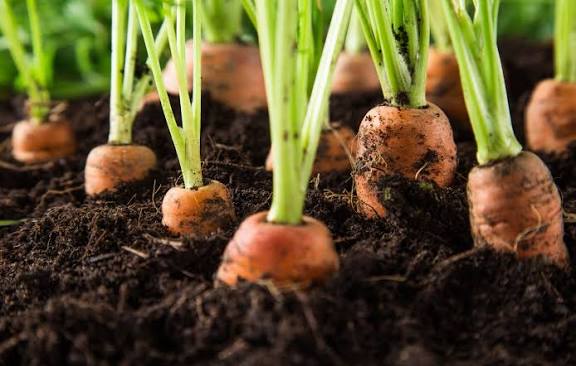Planting carrots from seeds is one of the most rewarding gardening projects you can try. Carrots grow easily in small spaces, thrive in containers or raised beds, and produce a truly unbeatable fresh flavor. Whether you’re gardening in the United States, United Kingdom, or Canada, these steps will help you get healthy, flavorful carrots every time.🥕 Why Grow Carrots From Seeds?Carrots must be grown directly from seeds because they don’t transplant well. Their root — the part you eat — starts growing immediately, so disturbing it can cause deformities.But planting seeds is simple, fast, and ideal for every gardener, even beginners.🌿 Step-by-Step: How to Plant Carrots From Seeds🥕 1. Choose the Right VarietyDifferent climates and soil types benefit from different carrot types:✔ Recommended Varieties:Nantes – sweet and crisp; great for beginnersDanvers – tolerate heavier soilsChantenay – short, stocky roots for shallow bedsImperator – classic long supermarket-style carrotsChoose based on your climate and soil. Shorter varieties do best in pots or less-than-perfect soil.🌱 2. Prepare Loose, Deep SoilCarrots need loose, rock-free soil so roots can grow straight and long.Ideal Soil Conditions:Light, sandy, well-drainingpH 6.0–7.0Free from stones, clumps, or debrisEnriched with compost (but not fresh manure)Raised beds or deep containers are perfect if your native soil is compact.🌧 3. Plant Carrot Seeds at the Right TimeBest Time to PlantUS: Early spring and again in late summerUK: February–JulyCanada: Late spring once the soil warmsCarrot seeds germinate best around 55–75°F (13–24°C).🌾 4. Sow the Seeds ProperlyCarrot seeds are tiny, so sowing thinly helps prevent overcrowding later.How to Sow:Make shallow rows about ¼ inch (0.5 cm) deep.Sprinkle the seeds lightly.Cover with a very thin layer of soil.Mist gently with water.Keep soil consistently moist until germination (10–21 days).Tip: Mix seeds with sand to spread them more evenly.🌤 5. Give the Right Growing ConditionsLightCarrots need full sun (6–8 hours), but tolerate partial shade.WaterKeep soil damp, not soggy.Water deeply to encourage long roots.Reduce watering once roots develop.MulchA thin layer of mulch prevents weeds and keeps soil cool.✂️ 6. Thin SeedlingsThis step is critical.Once seedlings reach 1–2 inches tall, thin them to 2–3 inches apart.This gives each carrot room to grow straight and plump.Use scissors to snip; don’t pull them out, as pulling can disturb nearby roots.🐞 7. Watch for PestsCommon carrot pests:Carrot rust flyAphidsSlugsSimple protection ideas:Use row coversRotate crops yearlyAvoid thinning during warm afternoons (smells attract pests)🥕 8. Harvest at the Right TimeCarrots are usually ready 60–80 days after planting.Signs They’re Ready:The top of the carrot is visible and about ¾–1 inch wideGreens look full and healthyRoot feels firmLoosen the soil gently before pulling to avoid breakage.🌟 Practical Tips for Success⭐ Water consistently for straight rootsIrregular watering causes split or forked carrots.⭐ Don’t fertilize too heavilyToo much nitrogen creates leafy tops and small roots.⭐ Sow every 2–3 weeksThis ensures a continuous supply of carrots.⭐ Grow short varieties in containersChantenay and Nantes are perfect for patios or balconies.⭐ Keep the soil coolCarrots taste sweeter when grown in cooler conditions.🧺 Storing Freshly Harvested CarrotsRemove the tops immediately.Store in the fridge for up to 3 weeks.For long-term storage, keep unwashed carrots in sand in a cool, dark place.🌼 Conclusion: Start Growing Carrots Like a Pro!Knowing how to plant carrots from seeds gives you the power to grow one of the easiest and most satisfying crops in your garden. With loose soil, steady moisture, and proper thinning, you’ll harvest crisp, sweet, homegrown carrots that taste far better than store-bought ones.Whether you’re gardening in the U.S., U.K., or Canada, these simple steps will help you enjoy brilliant results every season.

